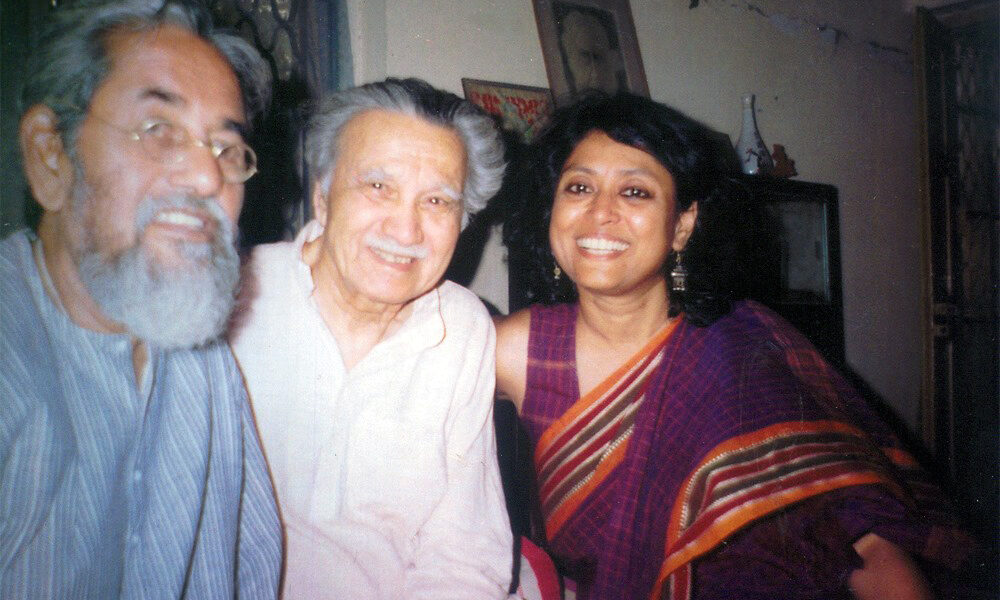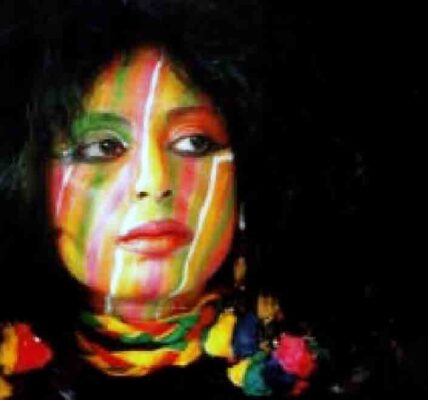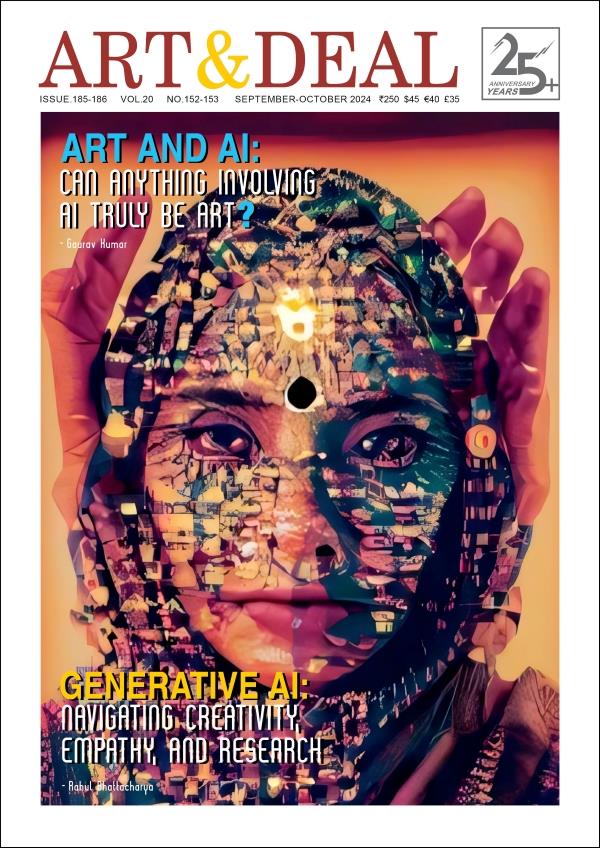A lot of things happen in your life and work that you don't understand or feel at that time. You get glimpses of them much later. Maybe a seed of art was in me since birth, and I have been nurturing it since my childhood. In our time the higher secondary board education system was up to eleven years, and luckily our school had a stream of Fine Arts. So since class ninth, that is since 1969, I have been completely immersed in the world of art and culture. I had a beautiful big family where I was the youngest member and thus grew up under great care. Although my father was a respected doctor, he had immense love and enthusiasm for art and culture, and along with our studies, he encouraged all my brothers and sisters to pursue arts, sports, music, and dance and also provided training and education.
After finishing my schooling in 1972, I enrolled in Kalabhavana, Santiniketan for a formal education in art, and graduated in Sculpture in 1977. I did my masters in creative sculpture from 1977 to 1979. Throughout this period, I was awarded many scholarships and grants. I even went to Greece for my PhD research from 1983 to 1986 with a Greek government scholarship. So it was my responsibility to contribute something different and non-conventional that would expand the geography with wider possibility for creativity and thus pave the way for new aesthetics added to Indian art history.

Most of the artists want their artwork to be sold in the market at a higher price. But that was never my intention. I instead thought that commercialisation could rather be an obstacle to creativity.
But after all my efforts were successful I came to know from different collections that many of my sculptures were destroyed due to submerging in water, some burnt to ashes, some disappeared from the outdoor collection, and the misinformation of some historians was removing my existence from this world. Also being the youngest member of my family, it is very painful to see everyone leaving this world one by one. I was overwhelmed with despair.
Since then, I entered my memory lane and started churning, which has taken the form of an autobiography.
Chapter:1.
A few pages related to my critical and creative art journey
Some good memories and some bad, surrounding the Kala Bhavana, during my education period in Santiniketan, 1972 to 1977.
My sister Sucharita Basu and brother-in-law Kalyan Kumar Basu helped me to get admitted to Santiniketan. We drove from Kolkata to Santiniketan by car; the roads were very bad at that time, and the journey went on for at least six hours. By the time we reached, it was almost ten o’clock at night. We stayed at the tourist lodge. My brother Dr. Mrinmoy Ghosh also came with us. The next morning at eight o’clock I had to sit for my admission test at Nandan, Kala Bhavana, for the due admission procedure. My eldest brother Dr. Jyotirmoy Ghosh worked in an Asansol hospital back then. He arrived at Nandan’s office at eight o’clock to encourage and support me. Hope, despair, joy, cheer, fear, and all strange feelings were in my mind at that time. Everyone was doing so much for me and if I could not become a good artist, then……
At the age of sixteen, in 1972, I was admitted to Kala Bhavana, Santiniketan. I studied there for five years and obtained my Bachelor in Fine Arts (Sculpture), and a Certificate in Dance (Kathakali) from Sangeet Bhavana in 1977. I did my Master’s from the MS University, Baroda, from 1977 to 1979. In 1983 I joined the University of Athens, Greece, with a Greek government scholarship for a PhD.
There was a Fine Arts stream in our school and there were variations in the subjects too. I took up Fine Arts. My subjects were painting, sculpture, history of art, art appreciation, and dance in school and board examinations.
Krishna Raichawdhuri was the teacher of the Fine Arts department in our school. She encouraged me to take admission in Santiniketan. Krishna di and her husband Brojo Raichowdhuri had been batch mates with Prof. Somnath Hore at the Calcutta Government Art College.
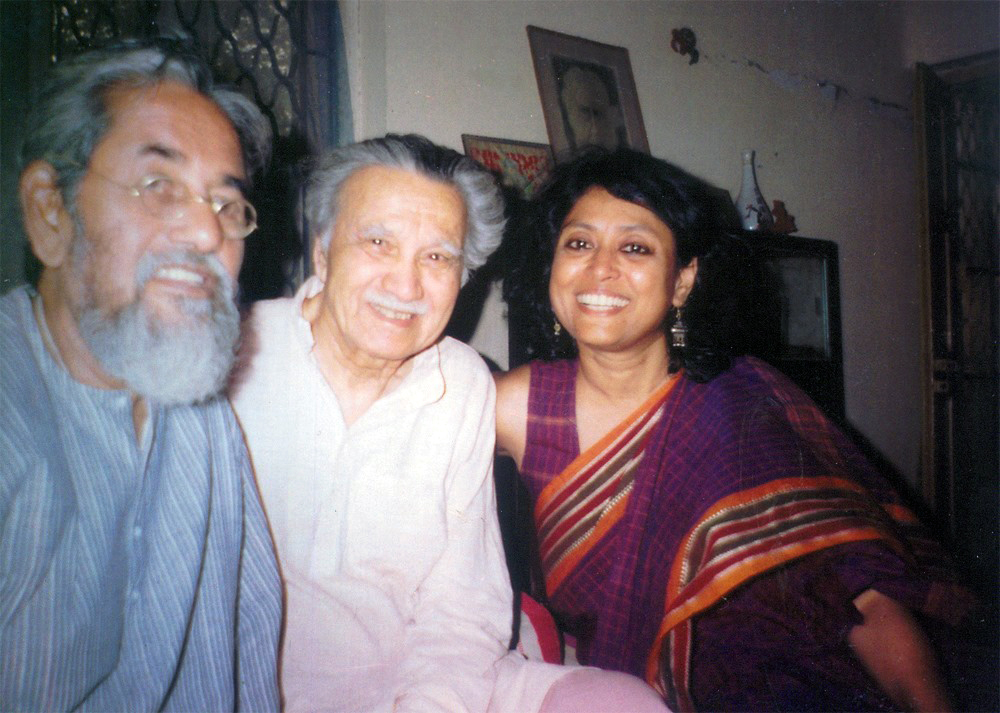
They wrote a letter to Somnath da saying “A very talented girl named Ratnabali Ghosh is going to get admission in Kala Bhavana. We expect a lot from her. One day she will be a profound artist and make us all proud. She needs your guidance and encouragement and wants to learn art from you.”
Somnath da came to the Nandan office at the time of my admission. He said to me, “If you need anything, come to the Graphics Department.” He would ask about my progress almost every month.
But in a very short time, I became very close with Kowshik da (Prof. Dinkar Kowshik, the then Principal) and Puspa di, and ever since no one else’s suggestion or help was needed. Kowshik da was my local guardian too. I received so much affection, care, love, and guidance from Kowshik da and Puspa di that I never missed anything in my five years at Santiniketan.
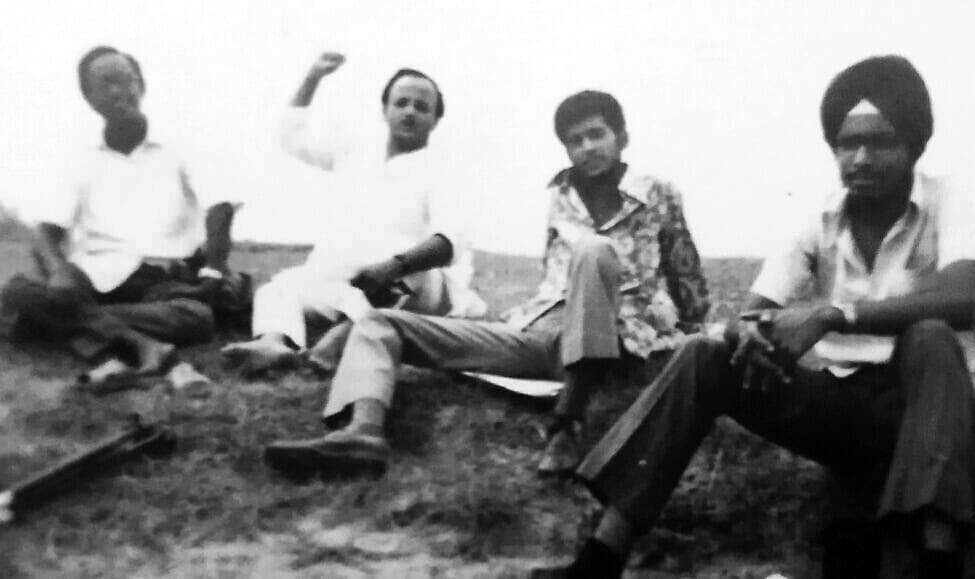
I used to go to their house almost once a week. I would tell him all the good and bad, or any problems happening with me. He listened to me patiently and used to advise me as to how to solve them. I was not regular in sending letters home, so my mother or sister would call Puspa di to find out about me. Puspa di never felt offended or disturbed by any of this.
In the third year, when it was time to decide on the specialization course, I applied for graphics because I took admission in Kala Bhavana to learn art from Somnath Hore. But he advised me, “What would you do by learning graphics, you will be stuck with the machine and techniques, here you will get all the facilities in the studio, but it would be difficult to continue with it later.”
On the other hand, Kowshik da advised me to specialize in painting so I could effortlessly continue my practice even at home.
But I thought sculpture would be an interesting subject for me. I would enjoy it more. Every stage and every process of sculpture-making was interesting and I enjoyed it very much, as I had been learning dance since school, and in Santiniketan also I additionally specialized in Kathakali at the Sangeet Bhavana. Thus, all the twists and turns, all the lyrical and static movements of the human body were very familiar to me. Therefore, I thought clay would be the best medium for me.
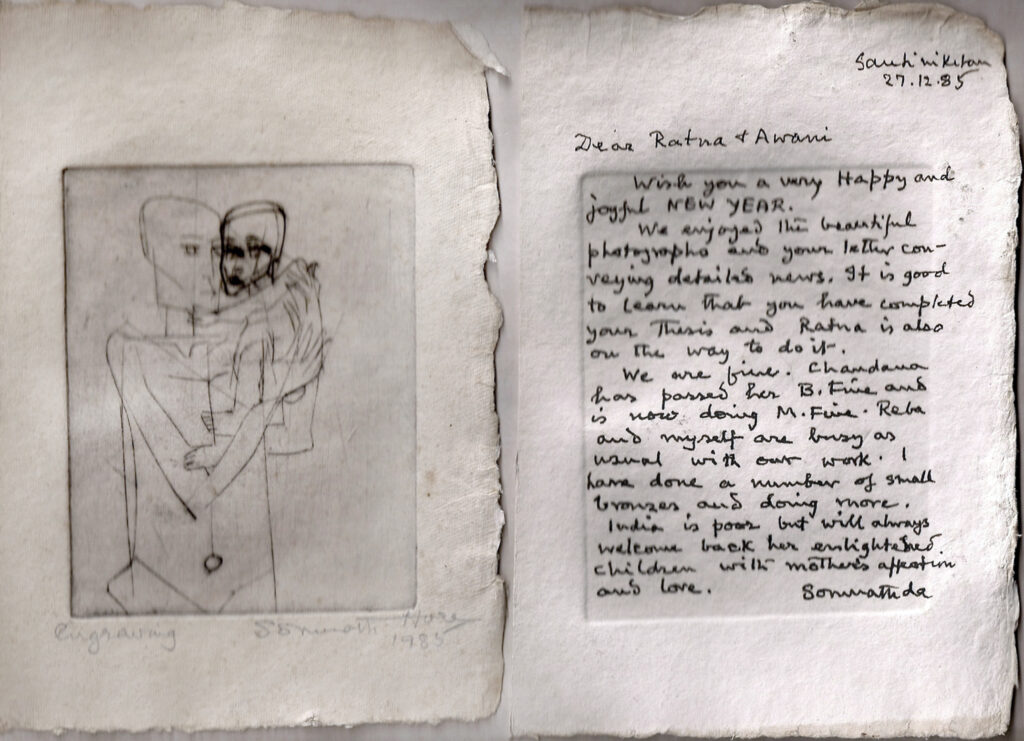
A year later one day, I saw Somnath da was making something with wax in front of the sculpture studio. He told me, “I did not let you learn graphics and now I came here to learn sculpture from you.” I knew he was joking, but it was good to hear from him.
But Ajit Chakraborty, HOD of Sculpture, used to disturb me often, my working in the Sculpture studio seemed objectionable to him.
Once there was a stone carving class. I bought red sandstone from the department. I used to do carving every day. The summer vacation fell before the carving was complete. I went on my annual two-month vacation back home in Kolkata. When I returned after the holidays I saw someone else had started carving my stone.
I learnt that Ajit da had sold my half-carved stone to a junior student.
I cried for three days and could not understand what to do next. So I went to Kowshik da to talk about this problem. I said, “We have stone carving in our syllabus, and if I cannot display it at the final submission, Ajit da may fail me.” Kowshik da then asked me to buy a small marble piece from Calcutta, do its carving every day, and take the stone back to the hostel daily and bring it back the next morning to carve in the studio. I thoroughly followed his advice.
I would work in clay in class (studio), take mould in plaster, and go back to the hostel after class thinking that I would do the casting the next day. But the next morning, I would find all my moulds turned into pieces. Bagal da, the studio assistant who used to prepare clay for us, said that Ajit da had told him to break those moulds and throw them out. Again a big roadblock. I cried a lot and went to Kowshik da to talk about this problem. This time he said the same thing, “Take your mould with you to the hostel, cast there, and bring them back to the studio in the morning.”
There was no end to such problems! Another problem was created by Ajit da, who said, “You all have to learn embossing on a brass plate.” I bought a good quality brass plate. He was pressuring me to complete it within a month, but was not teaching us any techniques!
Seeing me worried, David da (Sampatha Kumar David, who was a graphics teacher during our time) said, “I know how to do embossing, I will teach you.” Learning from David da, I completed the task in two days.
I showed the work to Ajit da. He did not say anything, neither good nor bad. He did not even look at my work properly. However, he did not ask other students to do the same task in class. There were four of us in the same batch: Amrik Singh, Benudhar Seth, Pranabendu Bikash Dhar, and myself.
Somehow I crossed all the hurdles, appeared in the graduation exam, and was satisfied with my performance. I displayed all my artwork beautifully on a large scale, and the final submission went well. I photographed all my displayed works. Kowshik da’s advice, love, affection and support went a long way in building my confidence.
Before taking admission in the MS University, Baroda, I took the photographs of my work to Prof. Ajit Chakraborty at the Nandan office. By this time he had become the vice principal of Kala Bhavana. I requested him to kindly attest those photographs saying they were all done by me during my graduation course. But he replied, “I never saw you doing all these works so I won’t attest…”
We were admitted to Kala Bhavana in 1972 and blended well with the environment and people. Sculptor Ajit Chakraborty joined as a teacher at Kala Bhavana in 1973 and soon became the head of the sculpture department, only to make my studies problematic.
But I am really grateful to him for one thing. When we were in our final year at Kala Bhavana, the legendary artist Ramkinkar Baij was making a relief sculpture for CMDA. Ajit da had requested Kinkar da that the final year students would benefit if they could get an opportunity to learn sculpture under his guidance. Kinkar da had agreed, and thus we learned the mystery of making relief and portrait sculptures from Kinkar da himself! Although I was the only one in the class who was excited and feeling lucky. I used to show him my work regularly. He liked the work I did under his guidance, and one day he brought a ‘chilam’ (terracotta tubes for smoking cannabis ‘gaanja’) and put it on the relief. He said this relief should be done in terracotta and pasted two of those tubes on the relief later. Seeing him work, and working with him was such a great experience for me.

After some time when I was applying for the National Cultural Scholarship, I went to Kinkar da for recommendation. I am very proud to say that the legendary artist Ramkinkar Baij recommended my name and filled out my form for the National Scholarship.
We were called for an interview at the Shastri Bhavan in New Delhi. I carried some of my sculptures for the interview. Among the judges were Prof. Dinkar Kowshik, Prof. Ajit Chakraborty, and the eminent artist KK Hebbar. Kowshik da and KK Hebbar highly appreciated my work and I was awarded the National Cultural Scholarship in 1977.
Many years later in 1995, Ajit da came to our home in Delhi, had dinner with us, appreciated each dish, and was very satisfied with my company. While he was leaving he said to me, “My good wishes and blessings will always be with you Ratnabali. Surely soon you will be a great artist.”
Apart from Ajit Chakraborty, Sarbari Roy Chaudhury, Sushen Ghosh, and Suren Dey taught us in our Sculpture department.
There were many teachers in our time who might not be in the limelight as such, but one could learn a lot from them.
Sarbari Roy Chaudhury: While I was in Kala Bhavana, I was influenced by the works of Sarbari da. It took a long time to overcome that and build my own identity.
After coming back from Greece, I became much closer to him. He used to enjoy talking to me about art. He was very happy seeing the works of my later period and was very appreciative. He once commented, “All art has an independent character. To watch the manner and movement of your art affords me a spontaneous pleasure. Our Guruji used to say – have you seen horses at a race? The one that finishes first extends its head at the bar. Once it has reached the bar, it has moved ahead in the race. That you have moved ahead overcoming so many hurdles is something great. We have much to learn from you”.
Suren Dey: He always used to involve me in everything, be it in sculpture or choreography or costumes or drama or acting or dance performance. He had a lot of confidence in me. Whatever task I was given, I always gave satisfactory results. Once he decided to direct the play ‘Buroangla’ written by Abanindranath Tagore in Kala Bhavana.
Suren da needed a little boy for the play. No boy at Kala Bhavana agreed to do the role. He then told me to play the little boy ‘Buroangla’. He said, “You are the only one who can understand this role and express the character beautifully.” I rehearsed with devotion every day and performed very carefully.
I still remember many teachers, students, and staff outside of Kala Bhavana came to congratulate me by praising my performance. Suren da had told me, “Your talent will spread all over India one day.”
The environment of Santiniketan and the education system of Kala Bhavana provide an apt space to build a versatile person, not only to create an artist but also an all-rounder. One can learn and absorb so much from its cultural milieu.
Read More>> Please Subscribe our Physical Magazine